Jennifer L Curtis
age ~35
from Williamsburg, VA
- Also known as:
-
- Jennifer Louise Curtis
- Phone and address:
-
4781 Captain John Smith Rd, Williamsburg, VA 23185
(757)2206749
Jennifer Curtis Phones & Addresses
- 4781 Captain John Smith Rd, Williamsburg, VA 23185 • (757)2206749
- Melbourne, FL
- Sebastian, FL
- Riverside, IL
- La Grange Park, IL
- Justice, IL
- Fairfax, VA
Lawyers & Attorneys

Jennifer Curtis - Lawyer
view sourceSpecialties:
Administrative
Regulatory
Contracts
Employment Law
Environmental Law
Regulatory
Contracts
Employment Law
Environmental Law
ISLN:
903118802
Admitted:
1981
University:
Stanford University, A.B., 1977
Law School:
Columbia University, J.D., 1980
License Records
Jennifer Kay Curtis
License #:
197 - Expired
Category:
Veterinary Medicine
Issued Date:
May 11, 1998
Effective Date:
Jul 14, 2000
Expiration Date:
Apr 1, 2001
Type:
Animal Technician
Jennifer Marie Curtis
License #:
80770 - Active
Category:
Nursing Support
Issued Date:
Oct 31, 2014
Effective Date:
Oct 31, 2014
Expiration Date:
Oct 31, 2018
Type:
Medication Aide
Jennifer Kay Curtis
License #:
137 - Active
Category:
Veterinary Medicine
Issued Date:
Jul 13, 2000
Effective Date:
Jul 13, 2000
Expiration Date:
Apr 1, 2018
Type:
Veterinary Technician
Jennifer C Curtis
License #:
1906 - Expired
Category:
Health Care
Issued Date:
Jun 8, 1998
Effective Date:
Mar 29, 2000
Expiration Date:
Dec 8, 1999
Type:
Provisional Speech-Language Pathologist
Name / Title
Company / Classification
Phones & Addresses
Customer Service Manager
Towne Air Freight, LLC
Trucking, Except Local
Trucking, Except Local
600 Thomas Dr, Bensenville, IL 60106
Principal
Deruzzo and Associates Inc
Nonclassifiable Establishments
Nonclassifiable Establishments
13246 S Rte 59, Plainfield, IL 60585
(815)7827513
(815)7827513
Customer Service Manager
Towne Air Freight, LLC
Trucking Operator-Nonlocal
Trucking Operator-Nonlocal
600 Thomas Dr, Bensenville, IL 60106
3720 Riv Rd, Schiller Park, IL 60131
(630)7665061
3720 Riv Rd, Schiller Park, IL 60131
(630)7665061
CENTERVILLE ELKS CHEER ASSOCIATION
OUTSIDE OF THE BOX CREATIONS LLP
Vice-President
Patti's Pretties Inc
Ret Florist Ret Gifts/Novelties
Ret Florist Ret Gifts/Novelties
117 W Slade St, Palatine, IL 60067
(847)3595440
(847)3595440
Us Patents
-
Apparatus For Using Optical Tweezers To Manipulate Materials
view source -
US Patent:6626546, Sep 30, 2003
-
Filed:Jul 1, 2002
-
Appl. No.:10/186807
-
Inventors:David G. Grier - Chicago IL
Eric R. Dufresne - Arlington VA
Jennifer E. Curtis - Chicago IL
Brian A. Koss - Chicago IL -
Assignee:University of Chicago - Chicago IL
-
International Classification:G02B 2700
-
US Classification:359614, 359615, 359601, 359613
-
Abstract:A method and apparatus for control of optical trap arrays and formation of particle arrays using light that is in the visible portion of the spectrum. The method and apparatus provides a laser and a time variable diffractive optical element to allow dynamic control of optical trap arrays and consequent control of particle arrays and also the ability to manipulate singular objects using a plurality of optical traps. By avoiding wavelengths associated with strong absorption in the underlying material, creating optical traps with a continuous-wave laser, optimizing the efficiency of individual traps, and trapping extended samples at multiple points, the rate of deleterious nonlinear optical processes can be minimized.
-
Use Of Multiple Optical Vortices For Pumping, Mixing And Sorting
view source -
US Patent:6737634, May 18, 2004
-
Filed:Jan 16, 2002
-
Appl. No.:10/050213
-
Inventors:Jennifer E. Curtis - Chicago IL
Brian A. Koss - Chicago IL
David G. Grier - Chicago IL -
Assignee:The University of Chicago - Chicago IL
-
International Classification:G01V 800
-
US Classification:2502222, 250573
-
Abstract:A method for creating large numbers of high-quality optical traps in arbitrary three-dimensional configurations and dynamically reconfiguring the traps under computer control. The method uses computer-generated diffractive optical elements to convert one or more optical tweezers into one or more optical vortices. The method involves combining the optical vortex technique with the holographic optical tweezer technique to create multiple optical vortices in arbitrary configurations. The method also involves employing the rotation induced in trapped particles by optical vortices to assemble clusters of particles into functional micromachines, to drive previously assembled micromachines, to pump fluids through microfluidics channels, to control flows of fluids through microfluidics channels, to mix fluids within microfluidics channels, to transport particles, to sort particles and to perform other related manipulations and transformations on matter over length scales.
-
Apparatus For Using Optical Tweezers To Manipulate Materials
view source -
US Patent:6846084, Jan 25, 2005
-
Filed:Aug 22, 2003
-
Appl. No.:10/646432
-
Inventors:David G. Grier - Chicago IL, US
Eric R. Dufresne - Arlington MA, US
Jennifer E. Curtis - Chicago IL, US
Brian A. Koss - Chicago IL, US -
Assignee:University of Chicago - Chicago IL
-
International Classification:G02B 2700
-
US Classification:359614, 359615, 359601
-
Abstract:A method and apparatus for control of optical trap arrays and formation of particle arrays using light that is in the visible portion of the spectrum. The method and apparatus provides a laser and a time variable diffractive optical element to allow dynamic control of optical trap arrays and consequent control of particle arrays and also the ability to manipulate singular objects using a plurality of optical traps. By avoiding wavelengths associated with strong absorption in the underlying material, creating optical traps with a continuous-wave laser, optimizing the efficiency of individual traps, and trapping extended samples at multiple points, the rate of deleterious nonlinear optical processes can be minimized.
-
Use Of Multiple Optical Vortices For Pumping, Mixing And Sorting
view source -
US Patent:6858833, Feb 22, 2005
-
Filed:May 17, 2004
-
Appl. No.:10/847042
-
Inventors:Jennifer E. Curtis - Chicago IL, US
Brian A. Koss - Chicago IL, US
David G. Grier - New York City NY, US -
Assignee:University of Chicago - Chicago IL
-
International Classification:H01J040/14
-
US Classification:250221, 250216
-
Abstract:A method for creating large numbers of high-quality optical traps in arbitrary three-dimensional configurations and dynamically reconfiguring the traps under computer control. The method uses computer-generated diffractive optical elements to convert one or more optical tweezers into one or more optical vortices. The method involves combining the optical vortex technique with the holographic optical tweezer technique to create multiple optical vortices in arbitrary configurations. The method also involves employing the rotation induced in trapped particles by optical vortices to assemble clusters of particles into functional micromachines, to drive previously assembled micromachines, to pump fluids through microfluidics channels, to control flows of fluids through microfluidics channels, to mix fluids within microfluidics channels, to transport particles, to sort particles and to perform other related manipulations and transformations on matter over length scales.
-
Multiple Optical Vortices For Manipulating Particles
view source -
US Patent:6995351, Feb 7, 2006
-
Filed:Feb 17, 2005
-
Appl. No.:11/059876
-
Inventors:Jennifer E. Curtis - Chicago IL, US
Brian A. Koss - Chicago IL, US
David G. Grier - Chicago IL, US -
Assignee:The University of Chicago - Chicago IL
-
International Classification:H01J 40/14
-
US Classification:2502222, 250221
-
Abstract:A method for creating large numbers of high-quality optical traps in arbitrary three-dimensional configurations and dynamically reconfiguring the traps under computer control. The method uses computer-generated diffractive optical elements to convert one or more optical tweezers into one or more optical vortices. The method involves combining the optical vortex technique with the holographic optical tweezer technique to create multiple optical vortices in arbitrary configurations. The method also involves employing the rotation induced in trapped particles by optical vortices to assemble clusters of particles into functional micromachines, to drive previously assembled micromachines, to pump fluids through microfluidics channels, to control flows of fluids through microfluidics channels, to mix fluids within microfluidics channels, to transport particles, to sort particles and to perform other related manipulations and transformations on matter over length scales.
-
Transverse Optical Accelerator And Generalized Optical Vortices
view source -
US Patent:7109473, Sep 19, 2006
-
Filed:Sep 10, 2003
-
Appl. No.:10/659153
-
Inventors:David G. Grier - Chicago IL, US
Jennifer E. Curtis - Chicago IL, US -
Assignee:University of Chicago - Chicago IL
-
International Classification:H01S 1/00
-
US Classification:250251, 25023111, 25022711, 7351419, 359642, 350 11
-
Abstract:A method and system for generating modulated optical vortices. Optical vortices can be used for a variety of applications, such as applying controlled torque or controlled force patterns to objects from a few nanometers to hundreds of micrometers in size. Numerous optical modes of optical vortices can be created to meet virtually any desired need in manipulating of objects. Furthermore, one can modify the wavefront of a beam of light in a specific way to create a new type of optical trap useful for manipulating mesoscopic materials. When the modified beam is brought to a focus, the resulting optical trap exerts forces transverse to the optical axis that can be used to transport mesoscopic matter such as nanoclusters, colloidal particles, and biological cells.
-
Aberration Correction Of Optical Traps
view source -
US Patent:20080316575, Dec 25, 2008
-
Filed:Jun 5, 2008
-
Appl. No.:12/155503
-
Inventors:Jennifer E. Curtis - Chicago IL, US
Brian A. Koss - Chicago IL, US
David G. Grier - New York City NY, US
Kosta Ladavac - Chicago IL, US
Karen Kasza - Palos Park IL, US -
Assignee:THE UNIVERSITY OF CHICAGO., - Chicago IL
-
International Classification:G02F 1/01
G02B 5/18
G01B 9/00 -
US Classification:359279, 359566, 356521
-
Abstract:A method and system for correcting aberrations in a beam of light including correcting for effects from an undiffracted portion of an input beam. The method and system includes (1) a component for providing a beam of light; (2) a component for applying a diffraction grating pattern to the beam of light to establish an optical gradient to form an optical trap; (3) component for measuring aberration in the beam of light having the applied diffraction grating pattern; (4) component for calculating a phase-shifting diffraction grating encoding the aberration; and (5) component for projecting the phase-shifting diffraction grating in conjunction with the diffraction grating pattern characteristic of the optical trap. The method and system also includes (1) providing an input beam of light; (2) applying a diffractive grating pattern to the input beam of light to establish a diffracted portion, apart from an undiffracted portion, to form at least one optical trap; (3) operating on both the diffracted portion and the undiffracted portion to bring the light to focus out of the focal plane; and (4) operating on the diffracted portion of the input beam of light (the optical trap) to modify focus of the diffracted portion relative to the undiffracted portion to bring the diffracted portion into focus in the focal plane.
Resumes

Jennifer Curtis Fairfax, VA
view sourceWork:
Oakton Community Library
Aug 2013 to 2000
Library Page Smithsonian National Zoo
Aug 2013 to 2000
Keeper Aide - Amazonia Smithsonian National Zoo
May 2013 to 2000
Keeper Aide - Invertebrate House Virginia Living Museum
Newport News, VA
Jun 2011 to May 2013
Senior Aquarist Virginia Living Museum
Newport News, VA
Feb 2012 to Jan 2013
Animal Care Assistant/Volunteer Williamsburg Regional Library
Williamsburg, VA
2006 to 2011
Circulation Clerk Virginia Living Museum
Newport News, VA
Jun 2009 to 2010
Aquarist Intern/Volunteer
Aug 2013 to 2000
Library Page Smithsonian National Zoo
Aug 2013 to 2000
Keeper Aide - Amazonia Smithsonian National Zoo
May 2013 to 2000
Keeper Aide - Invertebrate House Virginia Living Museum
Newport News, VA
Jun 2011 to May 2013
Senior Aquarist Virginia Living Museum
Newport News, VA
Feb 2012 to Jan 2013
Animal Care Assistant/Volunteer Williamsburg Regional Library
Williamsburg, VA
2006 to 2011
Circulation Clerk Virginia Living Museum
Newport News, VA
Jun 2009 to 2010
Aquarist Intern/Volunteer
Education:
University of Mary Washington
Fredericksburg, VA
2007 to 2011
BS in Natural Environmental Science and Biology
Fredericksburg, VA
2007 to 2011
BS in Natural Environmental Science and Biology
Skills:
Advanced Animal Care Skills, Supervisory Skills
Medicine Doctors

Jennifer A. Curtis
view sourceSpecialties:
Gastroenterology
Work:
Metro Atlanta GastroenterolgyMetro Atlanta Gastroenterology
5669 Peachtree Dunwoody Rd STE 210, Atlanta, GA 30342
(404)2554333 (phone), (404)2550601 (fax)
5669 Peachtree Dunwoody Rd STE 210, Atlanta, GA 30342
(404)2554333 (phone), (404)2550601 (fax)
Education:
Medical School
Medical College of Georgia School of Medicine
Graduated: 1999
Medical College of Georgia School of Medicine
Graduated: 1999
Procedures:
Colonoscopy
Esophageal Dilatation
Sigmoidoscopy
Upper Gastrointestinal Endoscopy
Vaccine Administration
Esophageal Dilatation
Sigmoidoscopy
Upper Gastrointestinal Endoscopy
Vaccine Administration
Conditions:
Anal Fissure
Celiac Disease
Diverticulitis
Gastrointestinal Hemorrhage
Intestinal Obstruction
Celiac Disease
Diverticulitis
Gastrointestinal Hemorrhage
Intestinal Obstruction
Languages:
English
Spanish
Spanish
Description:
Dr. Curtis graduated from the Medical College of Georgia School of Medicine in 1999. She works in Atlanta, GA and specializes in Gastroenterology. Dr. Curtis is affiliated with Emory Saint Josephs Hospital.

Jennifer E Curtis, Villa Park IL
view sourceSpecialties:
Physical Therapy
Address:
830 S Addison Ave, Villa Park, IL 60181
(630)6204433 (Phone), (630)6201148 (Fax)
(630)6204433 (Phone), (630)6201148 (Fax)
Languages:
English

Jennifer Curtis
view sourceSpecialties:
Family Medicine
Work:
Paradise Medical Group
6480 Pentz Rd STE B, Paradise, CA 95969
(530)8779326 (phone), (530)8772196 (fax)
6480 Pentz Rd STE B, Paradise, CA 95969
(530)8779326 (phone), (530)8772196 (fax)
Languages:
English
Description:
Ms. Curtis works in Paradise, CA and specializes in Family Medicine. Ms. Curtis is affiliated with Feather River Hospital.

Jennifer S. Curtis
view sourceSpecialties:
Family Medicine, Urgent Care Medicine
Work:
La Pine Community Health Center
51600 Huntington Rd, La Pine, OR 97739
(541)5363435 (phone), (541)5368047 (fax)
51600 Huntington Rd, La Pine, OR 97739
(541)5363435 (phone), (541)5368047 (fax)
Languages:
English
Description:
Ms. Curtis works in La Pine, OR and specializes in Family Medicine and Urgent Care Medicine. Ms. Curtis is affiliated with St Charles Health Center Bend.

Jennifer R. Curtis
view sourceSpecialties:
Family Medicine
Work:
Billings ClinicBillings Clinic Cody
201 Yellowstone Ave, Cody, WY 82414
(307)5277561 (phone), (307)5878372 (fax)
201 Yellowstone Ave, Cody, WY 82414
(307)5277561 (phone), (307)5878372 (fax)
Languages:
English
Description:
Ms. Curtis works in Cody, WY and specializes in Family Medicine. Ms. Curtis is affiliated with Billings Clinic Hospital and West Park Hospital.

Jennifer Erin Curtis, Villa Park IL
view sourceSpecialties:
Physical Therapist
Address:
830 S Addison Ave, Villa Park, IL 60181
Youtube
Googleplus
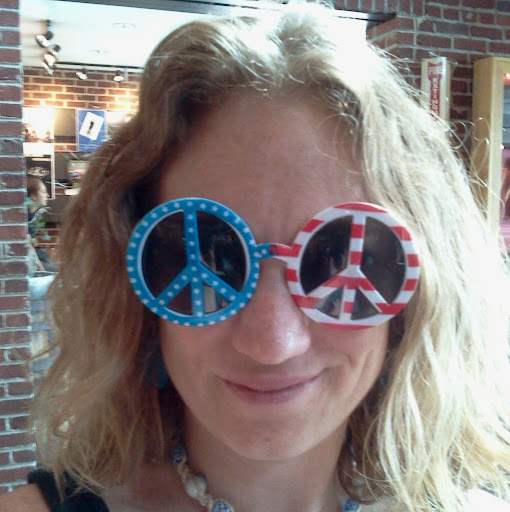
Jennifer Curtis
Lived:
Warrington, PA
Nashville, TN
Cocoa, FL
Nashville, TN
Cocoa, FL
Work:
Triumph Brewing Company - Runner (10)
Education:
Cocoa High School
About:
I'm a musician, stuck in PA, working my way back to Music City...
Tagline:
All in all you're just another brick in the wall...
Bragging Rights:
I play bass, cello, and french horn... Played with some cool ass people in Nashville

Jennifer Curtis
Lived:
Richmond, Virginia
Hampton, Virginia
Hampton, Virginia
Work:
Gold's Gym - Les Mills Group Fitness Instructor
World Pediatric Project - Director of Communications
World Pediatric Project - Director of Communications
Education:
Virginia Commonwealth University - Strategic Public Relations and Nonprofit Management
Relationship:
In_a_relationship
About:
Director of Communications for World Pediatric Project, PRSA Richmond president, and Les Mills instructor at Gold's Gym, The Fan.
Tagline:
Passionate about helping others be fit in all aspects of life
Bragging Rights:
Accredited by The Public Relations Society of America
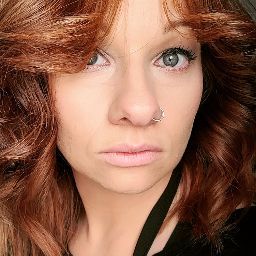
Jennifer Curtis
Work:
Modern Edges Hair Salon - Owner
Education:
Ausable Valley
Relationship:
Married
Tagline:
Licensed Cosmetologist, color expert and certified Master Makeup Artist

Jennifer Curtis
Work:
Capital Forclosure Management - Owner (2000-2011)
Education:
Over Educated - Under Paid
Bragging Rights:
Have two beautiful little blonde headed boys that are my world!
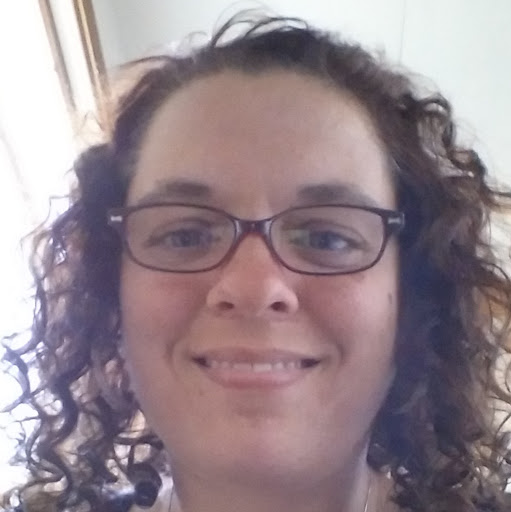
Jennifer Curtis
Work:
Crawford & Company - Independent Adjuster
Education:
Purdue University

Jennifer Curtis
Work:
Xcel Painting, Inc. - Office Manager
Education:
Texas Tech University - Sociology/English

Jennifer Curtis
Work:
Special School District - Teacher
Education:
Fontbonne University - Masters in Teaching

Jennifer Curtis
Work:
Walmart - Cashier (2013)
Tagline:
Funny,Loveable, sexy and smart.......very married
Bragging Rights:
Hard working,4kids and in love with my husband
Flickr
Myspace
News

Shoppers get a jump on Small Business Saturday
view source- Northampton has plenty of locally owned businesses that attract customers daily. Local shopper Jennifer Curtis told 22News she strongly believes in supporting local businesses and taking advantage of the unique products they have. "You're developing a human connection by learning that merchant. You
- Date: Nov 29, 2013
- Category: Business
- Source: Google

Scientists 'paint' the world's smallest Mona Lisa
view source- By tuning the temperature, our team manipulated chemical reactions to yield variations in the molecular concentrations on the nanoscale, said lead author Jennifer Curtis, an associate professor in the Georgia Institute of Technologys School of Physics. The spatial confinement of these reactions
- Date: Aug 05, 2013
- Source: Google

Formerly conjoined twins leave Children's Hospital
view source- "Maria was always singing and talking. Now Teresa is making all the noise," said Jennifer Curtis of World Pediatric Project, the Richmond-based medical philanthropy that arranged for the girls, who are from the Dominican Republic, to come to the United States for medical care.
- Date: Dec 03, 2011
- Category: Health
- Source: Google
Plaxo

Jennifer Curtis
view sourceProfessor, Chemical Engineering at University of F...

Jennifer Curtis
view sourceRichmond, Surrey and Sassell (rhymes with yellow)...

jennifer curtis
view sourceGlaxoSmithKline

Jennifer Curtis
view sourceBombardier

Jennifer Hofmeyer Curtis
view source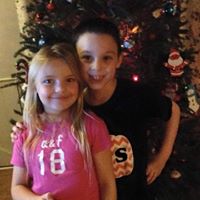
Jennifer Curtis
view source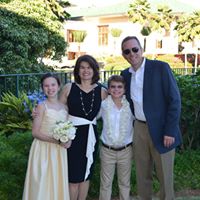
Jennifer Mishler Curtis
view source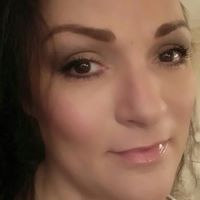
Jennifer Curtis Wienen
view source
Jennifer Curtis Weinischke
view source
Jennifer Curtis Laguardia
view source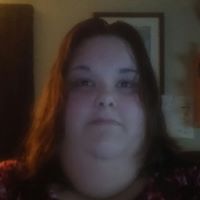
Jennifer Curtis
view source
Jennifer Willingham Curtis
view sourceClassmates
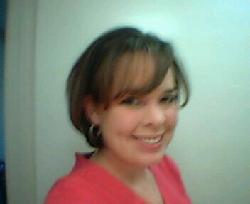
Jennifer Burks (Curtis)
view sourceSchools:
Sechrist Elementary School Flagstaff AZ 1987-1991, Cottonwood Elementary School Cottonwood AZ 1991-1992, Verde Valley Christian School Cottonwood AZ 1993-1994, Christian Academy Knoxville TN 1994-1998
Biography:
Life
It seems like growing up my family just moved, moved, moved!
I started elemen...

Jennifer Lichtenberger (C...
view sourceSchools:
William Grace Elementary School Farmington MI 1978-1983, East Middle School Farmington MI 1983-1986
Community:
Gordon Bush, Kathie Rosky
Biography:
Life
My Spouse:
We were friends for many years before dating, then we started dati...

Jennifer Hall (Curtis)
view sourceSchools:
Alex Haley Elementary School Chicago IL 1973-1980, Haley Elementary School Stickney IL 1973-1980, Home Elementary School Stickney IL 1980-1982
Community:
Karen Jennings, Ralph Chiucchi, Linda Lawler
Biography:
Life
I've been married to my husband, Ralph since 2/93.We have two beautiful childr...

Jennifer Duronslet (Curt...
view sourceSchools:
Green T. Lindon Elementary School Youngsville LA 1975-1977
Community:
Tanya Broussard, Jodi Freitag, Stacy Escue, Mary Schultz, Amy Clark, Jacque Deloach
Biography:
Life
Got a degree in Arizona after graduation nd now I am the director of a martial...

Jennifer Curtis
view sourceSchools:
Jay County High School Portland IN 1988-1992

Jennifer Curtis (Orten)
view sourceSchools:
Sadler S & S Consolidated High School Sadler TX 1987-1989, S & S High School Sadler TX 1987-1989
Community:
Annita Radford

Jennifer McMorrow (Curtis)
view sourceSchools:
Old Mill High School Millersville MD 1986-1990
Get Report for Jennifer L Curtis from Williamsburg, VA, age ~35



















